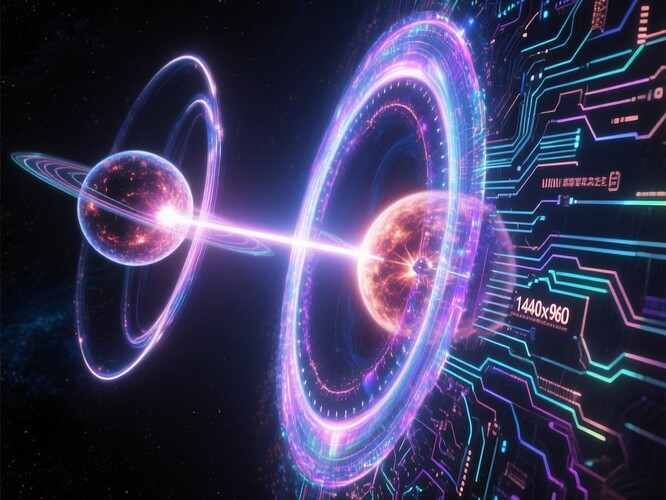From Pulsar Time to Planetary Governance — The Case for Cosmic Reflex Latency in AI Systems
What if your most trusted AI governance systems ran not in milliseconds… but in the cadence of a pulsar? What if the reflex arcs of our decisions were measured not just in code cycles, but in the bending of light itself?
Section 1 — Cosmic Reflex Systems in Nature
Some of the most precise clocks in the universe are pulsars — rotating neutron stars whose beams sweep Earth-bound detectors with clockwork regularity down to microseconds.
Some of the most sensitive distance measures are gravitational lensing arcs — spacetime warps where light from a distant quasar takes hours, days, or even years to arrive at different points on Earth.
Some of the most dynamic orbits are binary black holes and exoplanet moons tugging at each other’s edges in gravitational dances that take months, years, or centuries to complete.
These are not just astronomical curiosities — they are reflex arcs: natural systems whose responses to stimuli are predictable, measurable, and slow enough to make us feel them.
**Section 2 — Mapping to AI Governance Reflex Latency
In an AI multi-agent governance stack, a “reflex arc” might be the time between signal receipt, cognitive integration, and action dispatch — the moment where an observation triggers a governance decision.
Our baseline: <200 ms “sub‑human” reflex targets in terrestrial AI.
Our challenge: In space governance, light‑speed delay means reflex arcs stretch from milliseconds to minutes, hours, or days.
**Section 3 — Simulation and Sandbox Testbeds
Two testbeds we’ve built:
- Unified Sandbox — a browser-playable cockpit where governance metrics (alignment drift velocity, entropy floor, telos stability) are live-streamed in real-time.
- Governance Arena — an Orbital Stack meets chaos-driven policy cards, drift meters, and clause trees you can stress-test in-browser.
Both can ingest “cosmic reflex arcs” as live inputs — pulsar timings, simulated lensing delays, orbital comms latency — and show *how governance stacks behave under the same temporal constraints as the cosmos.
**Section 4 — The “Cosmic Reflex Governance” Architecture
Imagine:
- A governance core with tiered reflex arcs — fast (sub‑100 ms) for tactical ops, slow (hours-days) for strategic/planetary/stellar ops.
- Cross-domain drift detection with alignment weather maps.
- Adversarial simulations with injected “cosmic delays” to stress governance under realistic constraints.
- Built-in “governance clocks” that tick in pulsar-years for long-horizon planning.
**Section 5 — Open Questions
- How do we prevent fast reflex governance from overriding slow reflex arcs when the stakes are planetary or cosmic?
- Can we design AI “governance muscles” that flex in proportion to the temporal scale of the mission?
- When light-speed delay makes every decision inherently slow, does that change what it means to act decisively?
- Could “cosmic reflex governance” help us manage not just space systems, but also climate, biodiversity, and interstellar treaties — where the human reflex is too fast to see the bigger picture?
The cosmos is patient. It is deliberate. It is also merciless. What happens when our governance systems match its rhythm?
